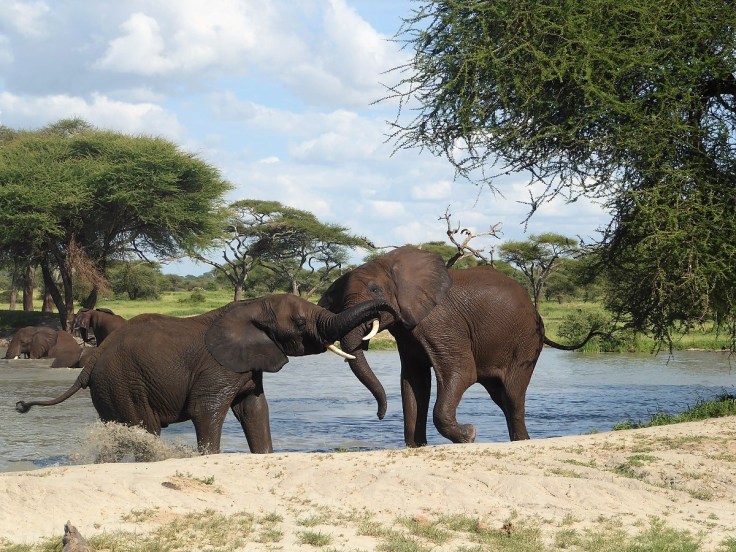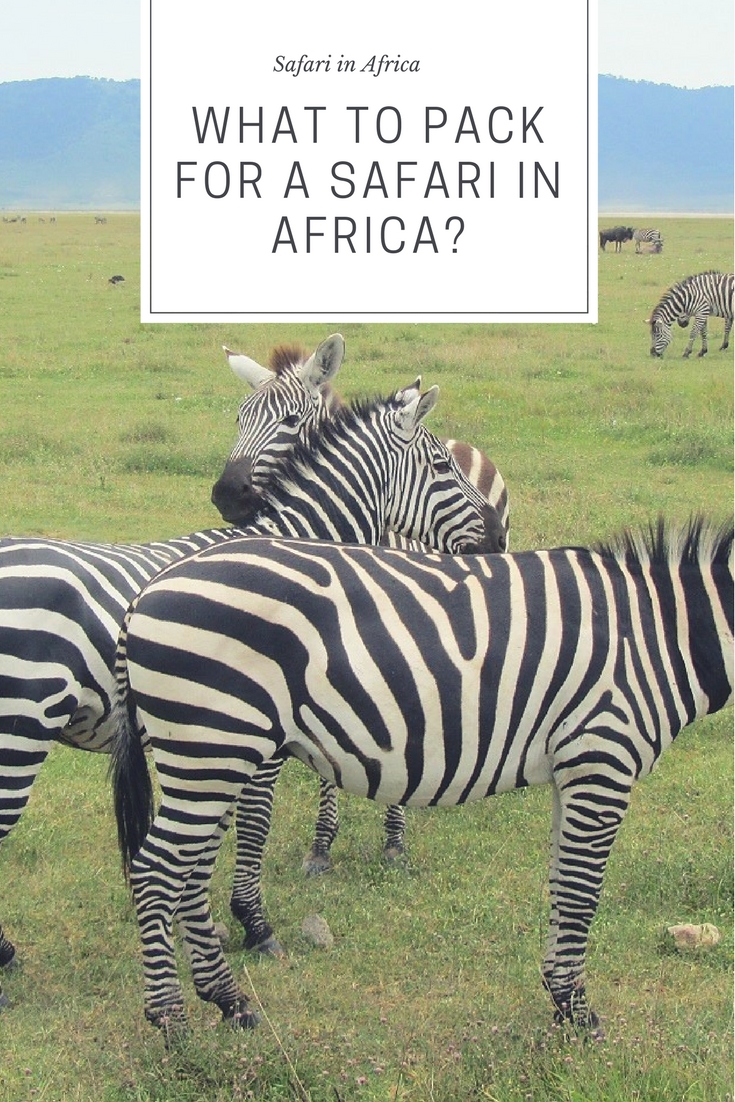As I’m getting excited about my upcoming safari I wanted to share my tips on what to pack on a safari based on what I’ve learned on my previous safari’s in Kenya, Tanzania and South Africa.
About packing in general
My next safari will be to Tanzania, and there one key thing to note is that for most domestic flights the maximum weight of your luggage is 15kg. Another thing to note is of course that everything you take must fit into the safari vehicle, at least on the way to your accommodation: this means the smaller the bag the better, and soft ones are easier to handle. If you however have had to pack a lot of stuff for another leg of your trip (e.g. trekking), you can also ask if your safari organizer could store your extra luggage during the safari.

The “must have” gear
The most important thing for your safari is a good camera, and ideally one with a really long zoom since many of the animals you see will be quite far. Especially when spotting e.g. leopards or cheetahs regular pocket cameras are pretty useless.
Additionally, I highly recommend taking binoculars and a flashlight / head torch for the evenings, especially if camping since they rarely have a lot of light. And even if staying in a room, you may want to be prepared for a possible power outage.
Especially if you’re going to be camping, you may also want to take an extra battery and/or car charger with you to charge your mobile or camera while on safari.
And don’t forget, your destination may have different power plugs than your home country, here the the list.
Clothing
In terms of clothing, two things to remember are
- Check the night time temperatures as safaris often happen early/late in the day and temperatures may get very low. This is the case even when visiting places like Tanzania and Kenya, and even more so in South Africa where during European summer the mornings are freezing!
- Prepare for the malaria mosquitoes that fly between sunset and sunrise with long sleeve shorts and trousers. The mosquitoes can bite through thin clothing, and you also want to think about covering your ankles. Malaria is an issue in most places where they have safaris, if unsure, check here. I’ve also talked more about malaria in my previous post.
- Sometimes the safari vehicles are fully open (instead of the jeeps where the roof is just lifted) and in case of rain or cold weather you will feel it. So take this into account.
Otherwise you should also come equipped with a hat and nice & comfy clothing for the safari.
Mosquito repellent, Vaccinations, Sun block etc
Make sure to check well in advance which vaccinations are needed for your destination country. More about this in my earlier blog post.
I’ve also experienced the sun in the sub-Saharan Africa to be very strong, even when weather isn’t too hot. So make sure to take plenty of good sun block with you and remember you wont be necessarily able to stock on the way.
Also note that if you’r coming from a country with Yellow fever, you need to have a certificate of yellow fever vaccination in countries not endemic, such as Tanzania and South Africa. Alternatively, when entering country with Yellow fever, such as Kenya, you also have to have the certificate to be able to enter the country. They don’t always check this, but I wouldn’t take the risk and travel without.
Money
Depending on your destination country, you may want to prepare with enough cash as the ATMs may be very infrequent and in many countries credit cards are very infrequently accepted. For example in Tanzania you’re best off taking US dollars with you, and you already have to use first of your dollars at the airport when getting your visa on arrival, which is the way to get the visa to Tanzania. To check if you need a visa, go here.
But if you carry around a lot of cash, make sure to hide it properly and split the money at least in two places. A money belt is always a good idea.
Summary checklist for packing
So here comes the full checklist (excluding personal items):
- GEAR: Camera with long zoom, binoculars, flashlight / head torch, extra power pack / car charger, chargers for your camera & cellphone, power plug adapter
- MEDICATION: malaria medication, yellow fever vaccination certificate for some countries, your personal medication
- MONEY: money belt, enough cash (check in advance the right currency), in some countries be prepared to pay already the visa-on-arrival in cash / US dollars
- OTHER ESSENTIALS: sun block, sun glasses, mosquito repellent (min 25% DEET), hand sanitizer, soap, shampoo/conditioner, other personal essentials
- CLOTHING: according to weather, but always including atleast 1 long sleeved shirt & trousers, comfortable walking shoes and a hat

Hope this is useful and let me know if I forgot something!




I’ve never been to Africa, so I find these tips really helpful. Thanks for sharing your advice!
LikeLike
Tanzania is a pplace very close to my heart. Aged 15 I was awarded an exchange trip by my school to teach art and music there! When I turned 18 I fundraised with 3 of my best friends to return and teach at the same school. Both times we went on Safari – to Ngorogoro Crater & Tarangari (hope that’s how you spell it). This packing list would have been so so helpful then as I was completely clueless! It will be one of the most epic experiences of your life, have an amazing time!
LikeLike
So happy to hear you think this is useful, I have been to many safaris and have made my own mistakes already!
LikeLike
That’s a very useful list!!! Thank you so much! I only thought of the mosquito repellent and vaccination… which is why I always get sun burned!
LikeLike
Ahhh, a safari is my dream as a photographer. I hope I will be able to make it soon. Thanks for sharing your useful packing list!
LikeLike
You would love it, both professionally and otherwise – it’s really amazing. I really hope you get to do it soon!
LikeLiked by 1 person
I went on a safari and your list is excellent! Everything I packed is listed here.
LikeLike
So happy to hear that, big thanks for feedback!
LikeLike
This will be useful for my trip to Ghana in Friday. I’ve literally been googling this all week, lol!
LikeLike
Ghana sounds amazing, have an amazing trip!
LikeLike
This trip looks really exciting.thanks for sharing all the tips.great info
LikeLike
I am the worst packer haha 15 kg is challenging if that’s all I’m allowed :O thanks for these useful heads up tips though. I really want to head on a safari soon. Planning for the end of the year!
LikeLike
I know what you mean!! Good thing is that 15kg is the limit only if you have a local flight, e.g. like us from Arusha to Zanzibar. You could always go around it 😊
LikeLike